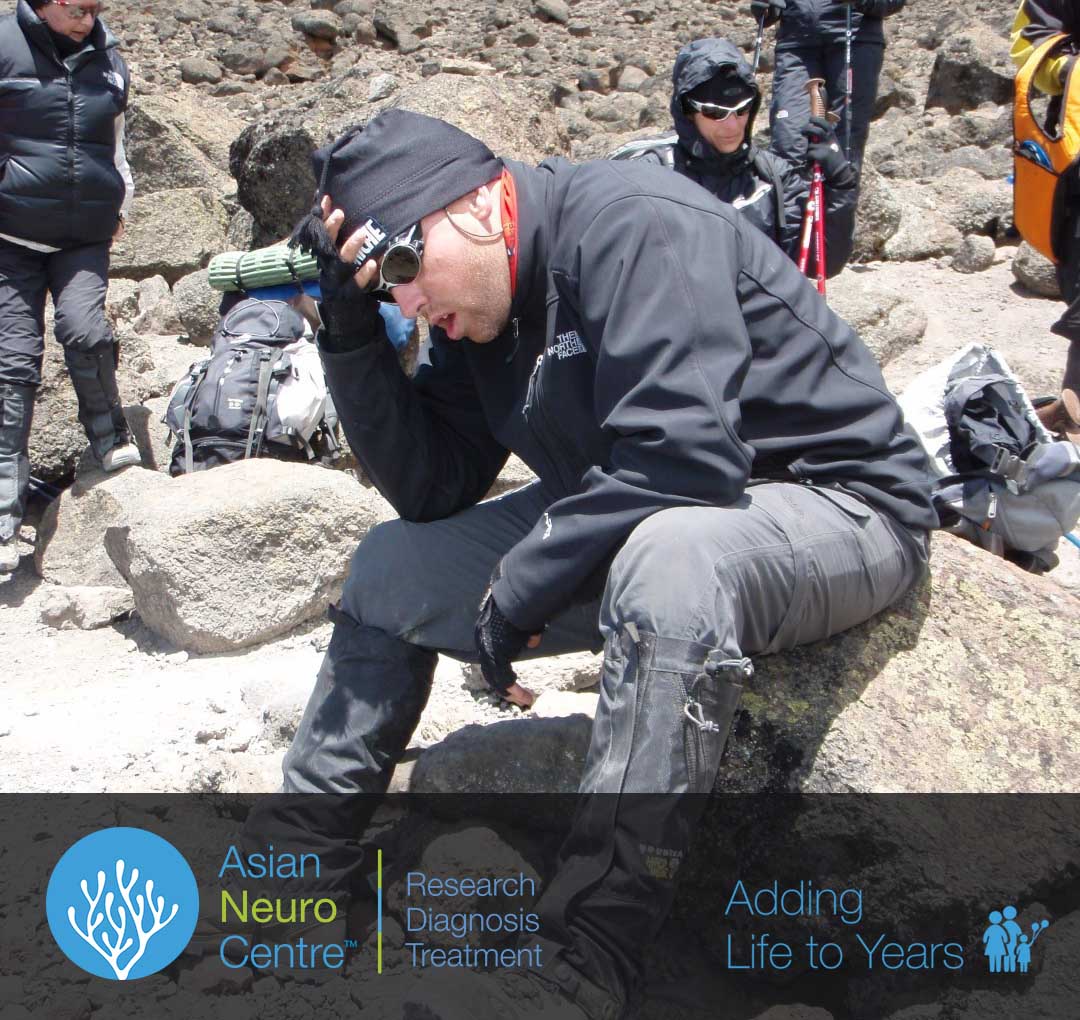- Have any questions?
- 911 12345 29
- info@asianneurocentre.com
Facts about Mountain or Altitude Sickness

Fibromyalgia: The Invisible Disease
January 23, 2020
CORONA VIRUS PREVENTION
April 17, 2020Facts about Mountain or Altitude Sickness
Definition of altitude sickness?
Altitude sickness is due to a rapid ascent to higher altitudes (4800 to 11,200 ft or more) due to the decreasing amount of oxygen (low PO2) that occurs at high altitudes like mountains.
Mainly three types of altitude sickness seen, first is acute (mild) altitude or mountain sickness (AMS), second is high-altitude pulmonary edema (HAPE), and last is high-altitude cerebral edema.
Exact cause of altitude sickness is the decreasing amount of oxygen concentration in air available as altitude increases.

Altitude Sickness
Signs of altitude sickness-
It can be divide into early and late-
Early symptoms include headaches,fatigue and insomnia.
Later symptoms include shortness of breath,extreme fatigue,respiratory distress or failure,cerebral edema,coma, and death. Altitude sickness diagnosis needs only clinical history. Sometimes other tests such as chest X-ray, head CT and/or MRI scans are utilized.
Treatment for altitude sickness?
To reduce symptoms or cure altitude sickness basic treatment is to descend down to lower altitudes.
Medical treatment for altitude sickness may include oxygen, hyperbaric treatment, and medicines such as acetazolamide and/or dexamethasone pain medications and antinausea medications. However, definitive treatment is for the patient to go to a lower altitude.
Most people with acute mountain sickness do not need a follow-up with a health-care professional. However, in serious cases those that develop high-altitude pulmonary edema and/or high-altitude cerebral edema may require more extensive follow-up with their doctors.
Prevention of altitude sickness is easy just by acclimatizing the body to increasing altitude. Some times in emergency cases prevention of acute mountain sickness is sometimes with drug acetazolamide.
In most of cases acute mountain sickness usually resolve with no much problems, but in serious cases patients that develop high-altitude pulmonary edema and/or high-altitude cerebral edema have a more poor prognosis. About 55% of individuals that develop coma with high-altitude cerebral edema die.

